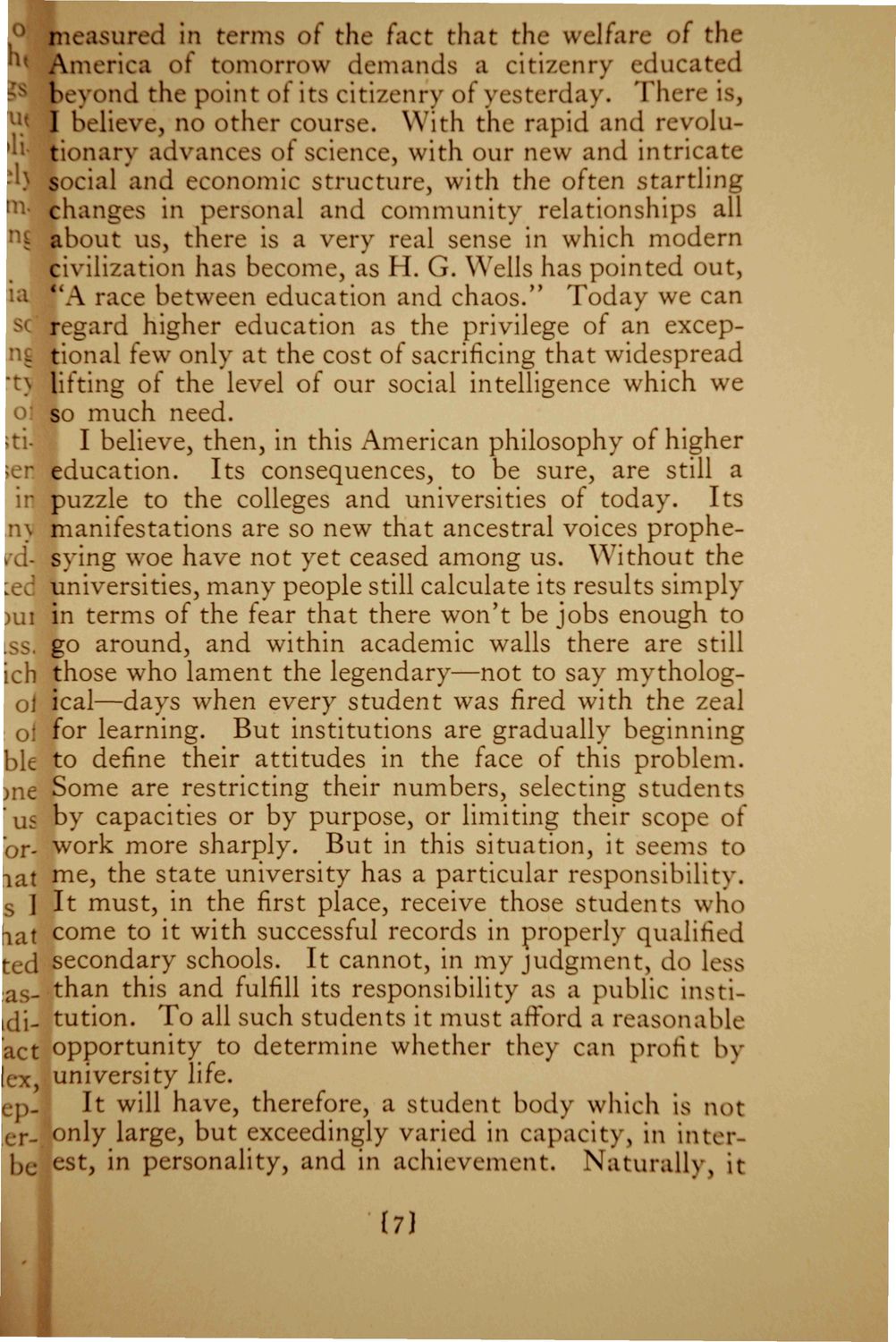| |
| |
Caption: Booklet - Installation of UI President (1931)
This is a reduced-resolution page image for fast online browsing.

EXTRACTED TEXT FROM PAGE:
measured in terms of the fact that the welfare of the America o\ tomorrow demands a citizenry educated 1 believe, no other course. With the rapid and revolu'' tionarv :\d\ tnces of science, with our new and intricate ) social and economic structure, with the often startling m- changes in personal and community relationships all about us, there is a very real sense in which modern civilization has become, as H. G. Wells has pointed out, "A race between education and chaos." Today we can regard higher education as the privilege of an excepm tional few only at the cost of sacrificing that widespread *t> lifting of the level of our social intelligence which we so much need. ;tiI believe, then, in this American philosophy of higher r education. Its consequences, to be sure, are still a ir puzzle to the colleges and universities of today. Its i\ manifestations are so new that ancestral voices prophed- sying woe have not yet ceased among us. Without the universities, many people still calculate its results simply >ui in terms of the fear that there won't be jobs enough to LJ- go around, and within academic walls there are still h those who lament the legendary—not to say mythologoi ical—days when every student was fired with the zeal But institutions are graduallv beeinnins ; c for learning. >le to define their attitudes in the face of this problem. >ne Some are restricting their numbers, selecting students by capacities or by purpose, or limiting their scope of "or- work more sharply. But in this situation, it seems to iat nie, the state university has a particular responsibility. | It must, in the first place, receive those students who i a t come to it with successful records in properly qualified ted secondary schools. It cannot, in my judgment, do less a , than this and fulfill its responsibility as a public instiidj- tution. To all such students it must afford a reasonable t opportunity to determine whether they can profit bv ex, university life. p. It will have, therefore, a student body which is not er- (only large, but exceedingly varied in caj icity, in interhe est, in personality, and in achievement. Natural!) , it 1 beyond the point of its citizenry of yesterday. There is, m
| |